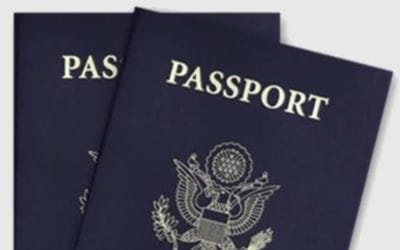The FAA reauthorization bill is coming up for a vote in about 200 more days. Between now and then, there are a lot of issues that will be considered and that will impact airline passengers, airlines and airports significantly for the next half-decade. The bill includes everything from reform of the air traffic control system to new rules of the air for unmanned aerial vehicles (UAVs) and for airport funding and airline prices. It also includes taxes. Big taxes.
Everyone involved with the upcoming FAA reauthorization bill, airports, chambers of commerce, immigration and customs and the agriculture department wants to increase taxes and fees that they collect from passengers.
Currently, consumers pay more taxes for the pleasure of flying than for almost any other activity in the country. Every passenger on a one-stop, round-trip flight has to fork over $11.20 for the TSA Security Fee. Passengers then pay $4.50 for each boarding — adding up to $18 for a connecting round-trip flight. In addition, every passenger has to pay the 7.5 percent transportation excise tax that is included in the airfare.
In other words, passengers are paying $29.20 before they even start paying airfare. That airfare is taxed a further 7.5 percent. For a family of four spending $200 apiece on airfare, that means an excise tax of $60 plus, $29.20 — a total of $89.20 in taxes.
By the time the taxes are figured into the cost of travel, the airline association, Airlines for America, figures that the effective tax rate is 21 percent on average.
Worse, according to Uncle Sam, passengers aren’t paying enough. The President, in his budget, and other businesses that work with airports think passengers should pay even more!
This article focuses on the passenger facility charge. The current rate is $4.50 per boarding, however, the airports and the administration are asking that this fee be increased to $8 per boarding.
Should this happen, passengers will be paying $32 in passenger facility charges for every one-stop round-trip. That added to the security fee adds up to $43.20. Then when the excise taxes are figured into a $200 airfare, the total tax ends up being $58.20 for an individual and $232.80 for a family of four.
Travelers United has heard advocates for the tax increase say, “It’s only a $3.50 increase in tax.” However, that assumes flights are all one way. Plus, most travelers like to come home. These tax advocates also assumes that the flights are non-stop. However, most flights on network carriers stop at one of the major airline hubs. The $3.50 increase is really a $14 increase where one stop and a round trip is involved. If legislators think about a family of four, the increase is $56, a serious chunk of change for the average American family. When taxes are increased by 77 percent, legislators need to take a second look.
The first reaction is, “Enough is enough!” But, the public citizen in us realizes that airports don’t function without investments and that many economic benefits flow to cities and towns because of a well-functioning aviation network. So, I took a deeper look at whether the airports really needed this money.
The facts are astounding. For all of the weeping and wailing about the need for more taxes, we found an airport financial ecosystem flush with cash. Unlike our highway systems where potholes are not filled and bridges crumble, the airport system is state-of-the-art.
• Most of the the big terminal construction projects are jointly financed by airports and airlines together.
• Most of the airports have high A-rated bonds, that make borrowing money easy; and, at low interest rates.
• Airport infrastructure bank accounts are enormous with an uncommitted balance of about $11.4 billion of unrestricted cash and investments. (Even if not one tax was collected next year, the nestegg would support almost every planned airport construction project).
• Other federal programs that support airport construction and safety enhancements are also enjoying plenty of cash. The Airport and Airway Trust Fund has $6 billion in the bank for future airport construction spending.
• The airports just collected more than $24 billion in revenues in 2014.
• The average collection per-passenger has far exceeded the inflation rate over the past 15 years.
At the same time the income of average American has been flat. If consumers’ incomes had increased by 52 percent over the past decade, like the income of airports, we wouldn’t be so concerned. However, as the economy has grown, incomes of the general public have been lagging.
Another consideration is the benefit that an efficient and busy airport brings to a community. Everyone benefits from new airport construction. But, only the passengers are paying. Though airports are financed with municipal bonds, the bonds are paid of in a large part by using passenger facility charge incomes. That is simply not fair to the flying public. The localities that are enjoying the economic spillover from successful airports should be forking over their fair share.
Travelers United can understand why Chambers of Commerce and local tourism officials are all supporting the increase the passenger facility charges — it is free money for them to pour into local jobs. But, for passengers taking off and landing at those airports it is an unfair subsidy and an unnecessary one when the infrastructure banks are brimming with billions of dollars of uncommitted cash.
Travelers United firmly rejects any need for any increase in airport or other government aviation-related taxes and fees.

Charlie Leocha is the President of Travelers United. He has been working in Washington, DC, for the past 14 years with Congress, the Department of Transportation, and industry stakeholders on travel issues. He was the first consumer representative to the Advisory Committee for Aviation Consumer Protections appointed by the Secretary of Transportation from 2012 through 2018.


